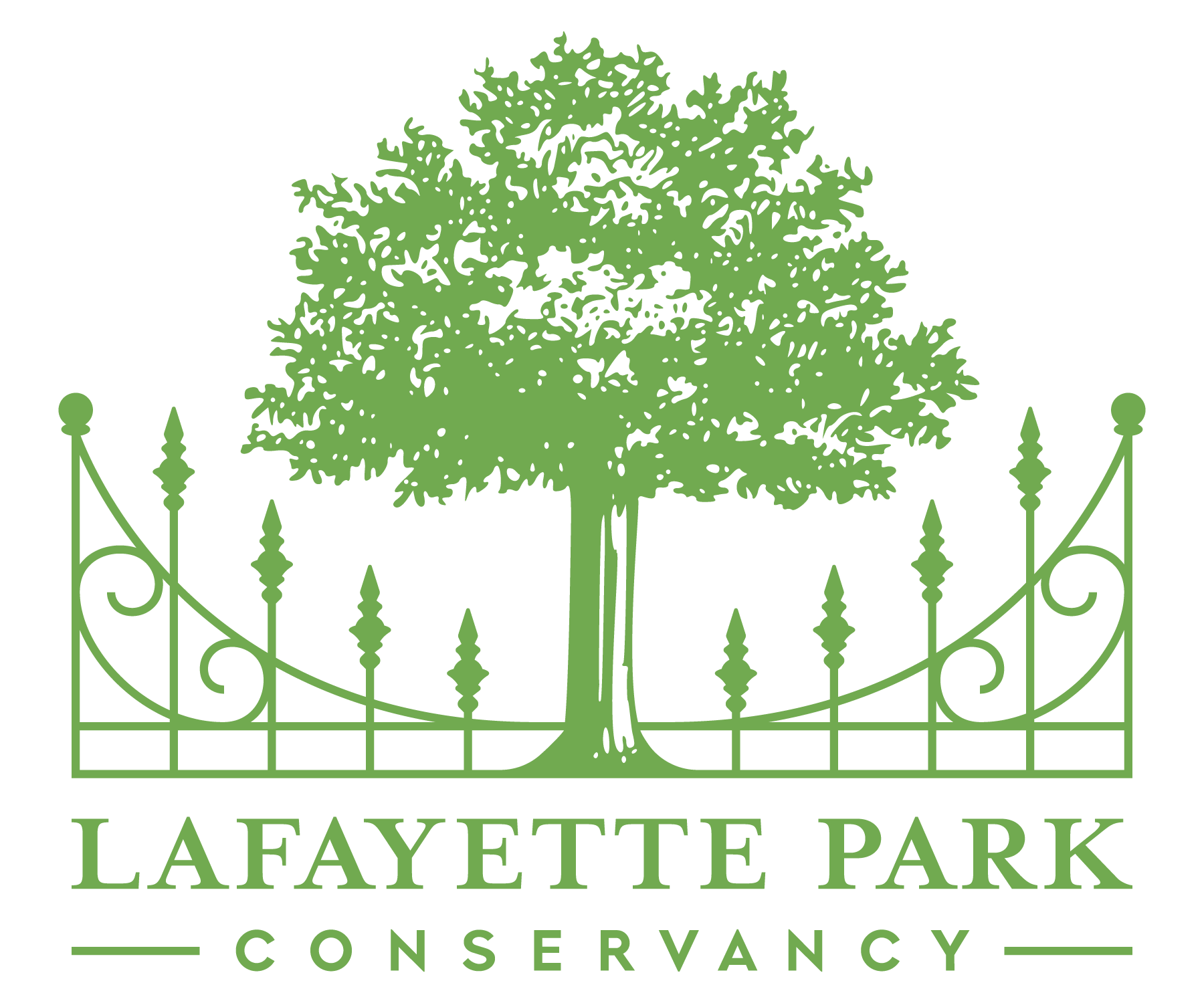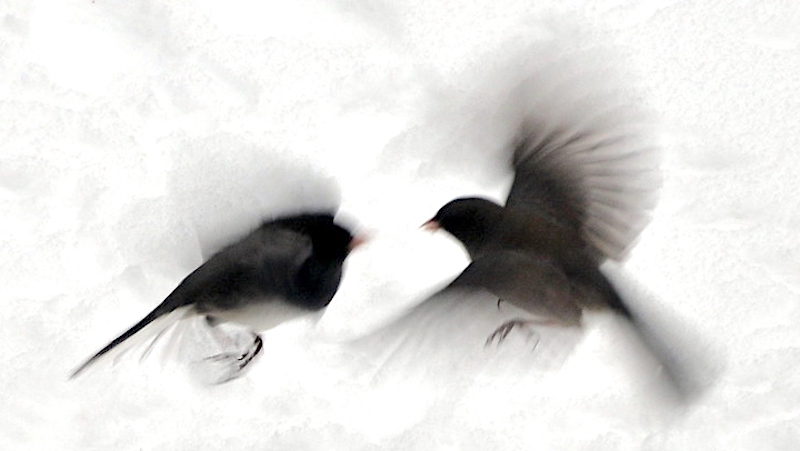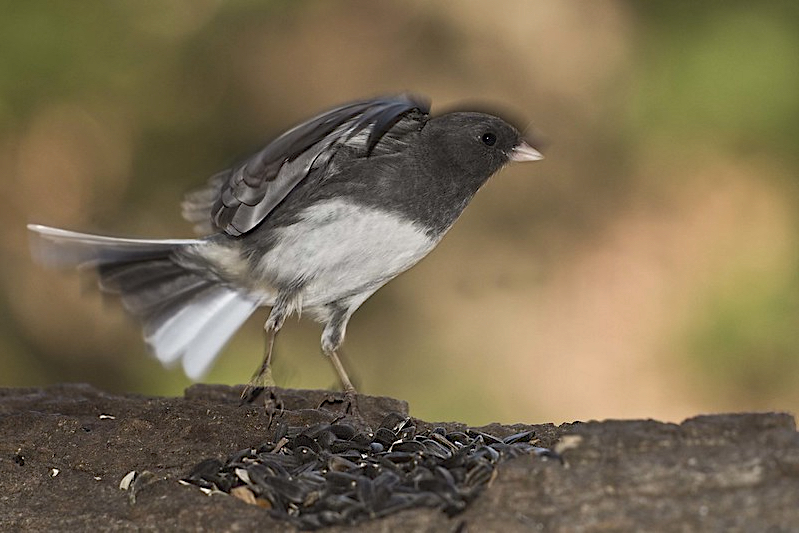BY KIERAN LINDSEY, PhD
If, as you gaze through a frosted window at a pewter sky, watching the neighborhood being tucked beneath a frosty white blanket, you wonder where all the snowbirds have gone… look no further than your own backyard.
I’m talking about Dark-Eyed Juncos (Junco hyemalis), of course. Small (5.5-6.3″/14-16 cm, beak to tail-tip; 0.6-1.1 oz/18-30 g), seasonally southbound nomads who migrate on the wing, not the significantly larger human snowbirds who travel by RV.
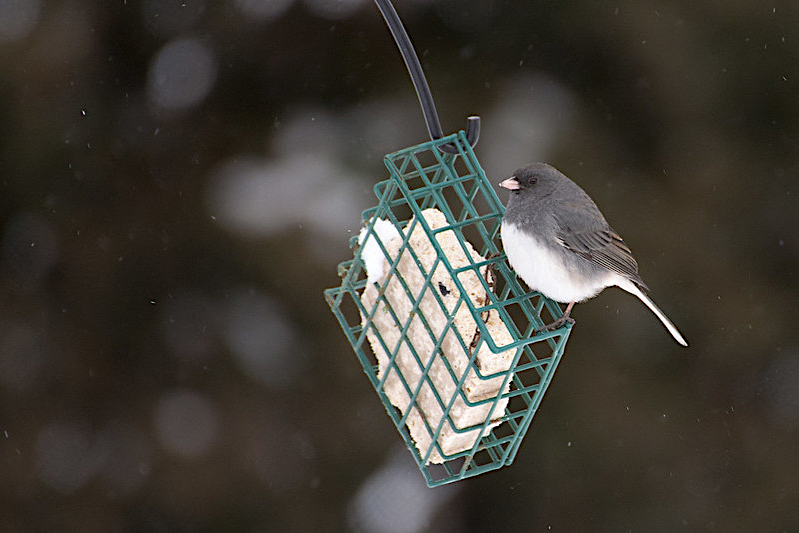
South, in the case of this North American species, is relative. Most DEJs spend the mid-March through mid-September breeding season in Canada, then, as Northern Hemisphere days grow shorter, they fan out across the Midwestern, Southeastern, and Southwestern U.S., as well as into Mexico.
A smaller subset of the population is non-migratory, spending 24/7/365 in New England, the Appalachian range, the Pacific Northwest, and the Rockies; as such, they don’t participate in this annual border-crossing pilgrimage. On the other side of the spectrum from the homebody DEJs, however, some Juncos travel even further afield, making occasional trips to western Europe, wintering in the gardens of Great Britain.
Oddly enough, it’s quite unusual for human snowbirds hiding out from winter in Florida to ever spot their feathered brethren. For some reason, the Sunshine State isn’t an attractive destination for Juncos (maybe the long lines at Disney World are a turn-off).
The DEJ is a New World sparrow (Passerellidae). Now, before you dismiss this species as just another generic LBJ,* keep in mind there’s veritable blizzard of DEJ subspecies and color variations — more than enough to keep the most obsessive birder occupied adding check-marks to their Life List. Depending on whom you ask, there are either six or seven taxonomic groups,** some containing quite an assortment of subspecies. For example, the Oregon group alone has eight different varieties: J. h. montanus, mutabilis, oreganus, pinosus, pontilis, shufeldti, thurberi, and townsendi.
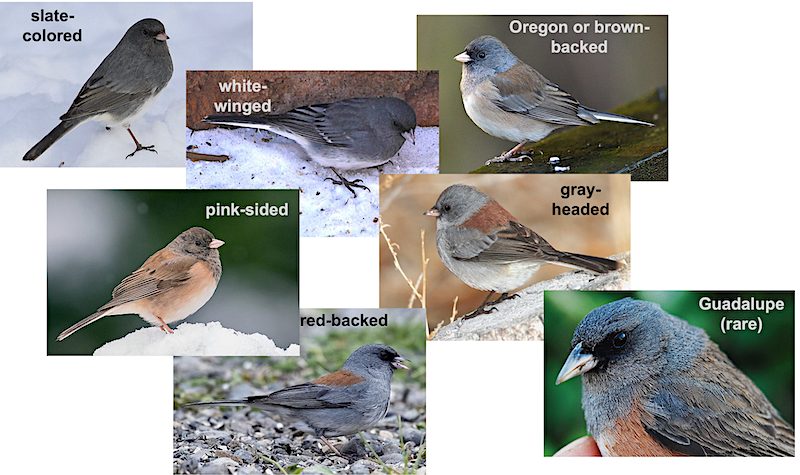
DEJs make other seasonal changes, beyond their geographic location. During the breeding season their preferred habitat is the floor of coniferous or mixed forests, where they can be found foraging for insects and seeds. But when DEJs shift to their cold-weather domiciles, they also alter their feeding strategy, moving into fields, woodland edges, suburban developments, and city parks.
Slate-colored juncos are reliable winter visitors to Lafayette Park, where you’ll see and hear them kicking dead leaves aside in the understory of the Rock Garden, near the mid-Missouri gate. Their hop-and-kick rummaging strategy, especially in leaf litter, is an easy way to recognize Juncos within large feeding flocks comprised of multiple species, including other types of sparrows, finches, towhees, and cardinals (all of which usually employ a hunt-and-peck approach).
In fact, these congregations may include several different subspecies of Juncos. I guess that shouldn’t come as a surprise, given that DEJ groups interbreed in areas where their ranges overlap.
“Cosmopolitan” Juncos become frequent winter patrons of feeders stocked by their human neighbors, especially those birdy bistros provisioned with millet, safflower, and/or peanut pieces. DEJs will occasionally perch on a feeder but you’re more likely to see them underneath, feasting on the morsels spilled or discarded from above, because they do prefer to dine on terra firma. They’re quite fond of suet, though (as are many of their avian brethren) — enough to overcome their default ground feeding tendencies.
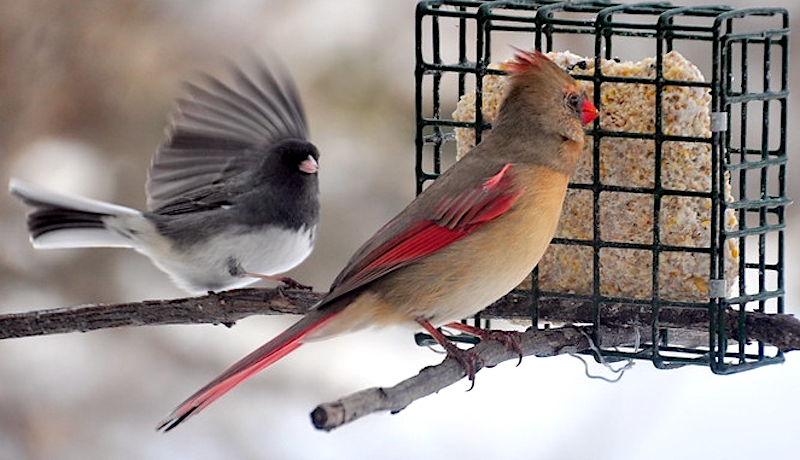
DEJs have different summer and winter wardrobes, too. The color palette doesn’t change much but Juncos trade their sleek summer silhouette for the warmth of a puffy parka… although in this case the insulation source isn’t polyester microfibers or goose down but grow-your-own. Juncos sport up to 30% more feathers when Jack Frost is making daily appearances than in the months after clocks spring forward.
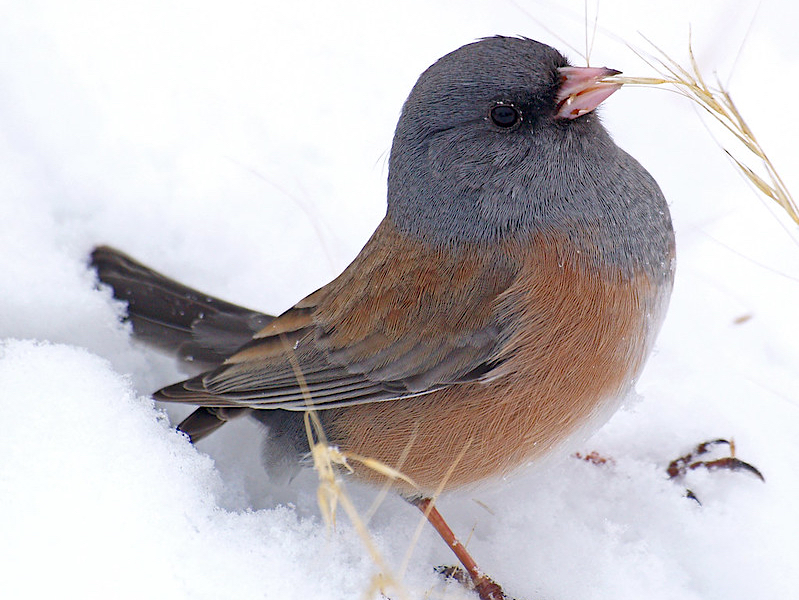
To everything there is a season, including winter homes, winter diets, winter wardrobes, and winter birds. Soon daylight will edge into the evening hours, the landscape will grow greener, and Junco Season will end with a flurry of northbound wings, at least in my part of the world. Until then, I’ll be peering out from the hood of my own version of winter plumage, watching for a chance to visit with the local snowbirds while they’re still in town.
* LBJ is birder lingo for “little brown job,” using to reference the many hard to distinguish small brown passerine birds, and not a reference to former POTUS Lyndon Baines Johnson.
.
** The images shown are all of males because they exhibit the most visible color diversity
.
© 2022 Next-Door Nature. No reprints without written permission from the author (I’d love for you to share my work–just ask first). Thanks to these photographers for making their work available through a Creative Commons license (CCL): Rachid H; Jean-Sébastien Guénette; Under the same moon… (slate-colored); Paul Hurtado (white-winged); Vijay Somalinga (Oregon); Mick Thompson (pink-sided); Alan Schmierer (gray-headed); Doug Greenberg (red-backed); Pau Aleixandre, Julio Hernández Montoya & Borja Milá(Guadalupe); Rachid H; Bryce Bradford; and Anne Davis 773.
